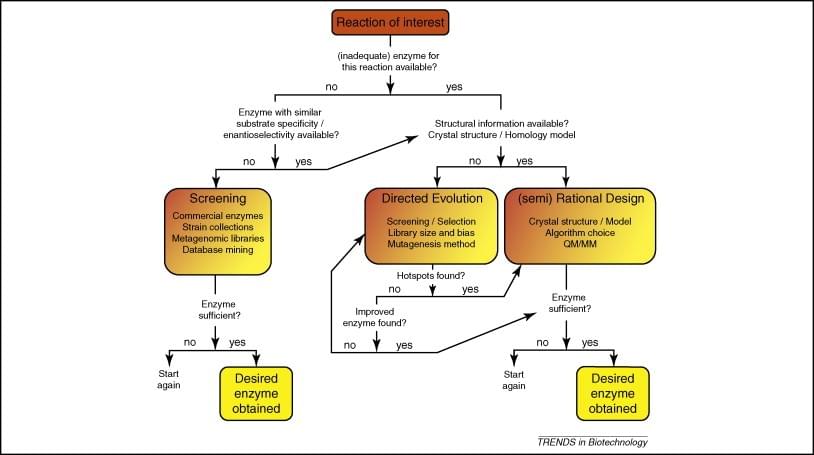Enzyme Engineering
Creative Biostructure can provide perfect enzyme engineering service for our customers. We have experienced scientists of different disciplines, who can select the most appropriate enzyme engineering or enzyme design strategy for the enzyme of your interest. Commonly, the enzyme is constructed by screening template enzymes to decide the modified catalytic activity: substrate specificity, catalysis pathway(s) belonged to, etc.

Figure. Decision tree for selecting the most appropriate enzyme-engineering strategy
Enzymes function as catalysts to accelerate the rates of various biochemical reactions with exquisite specificity. In order to introduce new functionalities and to meet the requirements in industrial biotechnology, it is needed to modify the structure of enzymes by enzyme engineering. Rational design and directed evolution are two complementary strategies that are currently available. And in semi-rational design, these two methods are combined. Rational design is data-driven design, in which precise changes in amino acid sequence are preconceived based on well understanding of protein structure, biochemical characteristics, function and mechanism. Then the precise changes are introduced by site-specific mutagenesis. Due to the increased beneficial mutations and the reduction of library size, it takes less time and effort to screen the library. This method is widely used to optimize the desired properties for commercial applications.
And if there is no available data including structural data, biochemical data and sequence conservation, directed evolution is the preferred strategy in enzyme engineering. Compared with rational design, directed evolution perform high-throughput assay and it can be achieved by several methods such as in vitro mutagenesis (e.g. error-prone PCR), homologous recombination (e.g. DNA shuffling), etc. One advantage of directed evolution is that it mimics the natural evolution and harness the power of mutation. Semi-rational design combines the benefits of rational design and directed evolution. Based on the structural knowledge, targeted randomization and site-saturation mutagenesis are performed in semi-rational design and this method is particularly advantageous when no high-throughput screening approach is available. Beside the approaches of rational design, directed evolution and semi-rational design, de novo design is an also optional strategy in enzyme engineering which greatly depends on computational methods. The de novo approaches have been improved and developed rapidly in recent years. All these methods mentioned above have their own characteristics and they can all improve enzyme properties. To choose the most effective approach mainly depends on the level that the information of the enzymes is understood. With rich experiences in protein/enzyme engineering, Creative Biostructure will assist every client to custom the most appropriate method.
Popular strategies used for protein/enzyme engineering:
- Rational Design
- De novo Design
- Directed Evolution
- Semi-rational Design
Linda G. Otten, et al. Enzyme engineering for enantioselectivity: from trial-and-error to rational design? Trends in Biotechnology. 2010 Jan; 28 (1): 46-54.
Kerstin Steiner and Helmut Schwab. Recent advances in rational approaches for enzyme engineering. Comput Struct Biotechnol J. 2012 Oct 22; 2: e201209010.
Ridong Chen. Enzyme engineering: rational redesign versus directed evolution. Trends Biotechnol. 2001 Jan; 19(1):13-4.